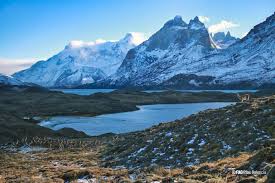Protecting South America's Coastlines: Mangroves, Climate Change, and Resilience

Updated at: 2025-02-23 10:20:12 (4 months ago by Melkisedeck Leon Shine)
```htmlMangrove Ecosystems: South America's Coastal Shield Against Climate Change
South America's intricate network of mangrove ecosystems plays a critical role in safeguarding its extensive coastlines from the escalating impacts of climate change. These vital ecosystems, however, face increasing pressure from both human activities and the intensifying effects of a changing global climate. This article explores the indispensable contribution of mangroves to coastal resilience, examines the climate-related threats they face, and highlights successful conservation initiatives, emphasizing the need for collaborative action across North and South America.
The Indispensable Role of Mangrove Ecosystems
Mangrove forests serve as natural bulwarks, providing crucial protection against the destructive forces of storm surges, coastal erosion, and rising sea levels. Their complex root systems dissipate wave energy, reducing the impact of extreme weather events on coastal communities and infrastructure. Beyond their protective function, mangroves are biodiversity hotspots, offering essential habitats, breeding grounds, and nurseries for a vast array of marine and terrestrial species. This rich biodiversity underpins the ecological health and economic productivity of coastal regions.
Furthermore, mangroves are significant carbon sinks, sequestering substantial amounts of atmospheric carbon dioxide. This carbon sequestration capacity contributes significantly to global climate change mitigation efforts, making their conservation crucial for both local and global environmental well-being.
Climate Change: A Growing Threat to Coastal Regions
The escalating effects of climate change pose a significant and multifaceted threat to coastal communities across North and South America. Rising sea levels are steadily encroaching upon coastal areas, while increased storm intensity and frequency lead to more frequent and devastating extreme weather events, such as hurricanes and floods. These events cause significant damage to infrastructure, displace populations, and disrupt livelihoods.
The problem is compounded by human activities. Deforestation driven by agricultural expansion, unsustainable development, and pollution degrade mangrove ecosystems, weakening their ability to protect coastlines and exacerbating the vulnerability of coastal communities. Urban sprawl further encroaches upon these vital ecosystems, reducing their extent and diminishing their protective capacity.
Protecting Our Future: Mangrove Conservation and Restoration
The preservation and restoration of mangrove ecosystems are paramount for enhancing coastal resilience and mitigating the impacts of climate change. Governments, local communities, and international organizations must work collaboratively to implement effective conservation strategies. This includes the establishment of protected areas, the enforcement of strict regulations on coastal development, and the promotion of sustainable fishing practices that minimize environmental damage.
Community engagement is crucial for long-term success. Involving local communities in conservation efforts fosters a sense of ownership and promotes the adoption of sustainable practices. Empowering local populations with knowledge and resources enables them to actively participate in the protection of these vital ecosystems and the sustainable management of coastal resources.
South American Success Stories: Inspiring Examples of Conservation
Several successful mangrove conservation and restoration projects across South America provide inspiring examples of what can be achieved through concerted effort. The Baixada Maranhense region of Brazil showcases the positive outcomes of large-scale mangrove restoration, not only preserving the ecosystem's ecological functions but also providing sustainable livelihood opportunities for local communities.
Similarly, the Gulf of Morrosquillo in Colombia demonstrates the multifaceted benefits of mangrove conservation. The protection of mangrove forests has effectively mitigated coastal erosion, improved water quality, and boosted tourism revenue, demonstrating the economic and ecological synergies of effective conservation.
A Call to Action: Fostering Coastal Resilience Through Collective Action
The protection of mangrove ecosystems is not merely an environmental imperative; it is a crucial step towards ensuring the long-term sustainability and resilience of coastal communities. Individuals can contribute significantly by raising awareness, supporting local conservation initiatives, and advocating for policies that prioritize the protection of these vital ecosystems. Through collective action, informed advocacy, and collaborative efforts across North and South America, we can build a more resilient future for our coastlines and safeguard the invaluable services provided by mangrove forests for generations to come. Let's unite to protect these essential ecosystems and ensure the wellbeing of our shared coastal heritage.
Learn more and get involved in protecting our coastal regions! #MangroveConservation #CoastalResilience #ClimateAction #NorthAndSouthAmericaUnity
```



